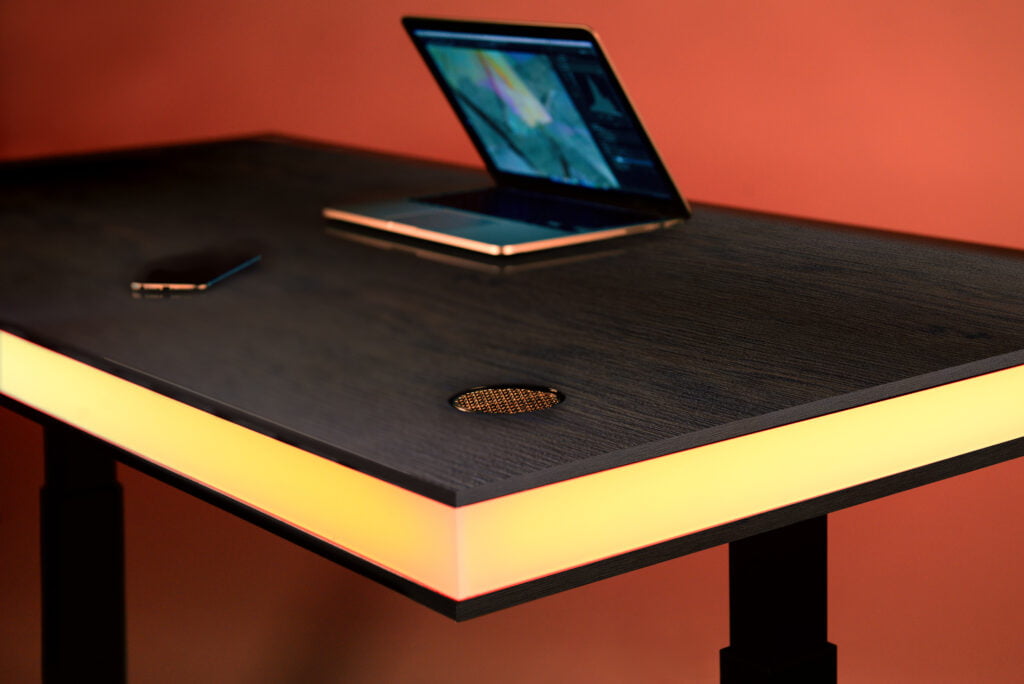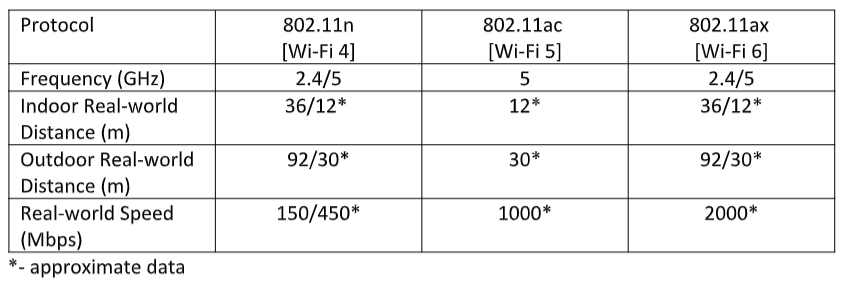
You might wonder why this is relevant for a smart workspace system, such as TableAir? Well, it’s fitting because of a common misconception in the world of IoT (Internet of things) which TableAir is part of. Occupancy sensors and devices such as access card readers produced by TableAir work within existing WiFi networks already present at client locations.
The current trend is to install new routers within the 5 GHz range. 5 GHz, after all, sounds like more than double the speed of a mere 2.4 GHz, right?
It creates an impression that 2.4 GHz WiFi is inevitably fading away. However, we argue the 2.4 GHz will stay with us for a while. Especially with the recent approval of the WiFi 6 protocol (802.11ax), which IEEE approved on February 9, 2021
We all like numbers; it’s a language of concrete. Let’s look at the factual information such as coverage distance and speed in the chart below:

In a nutshell, 5 GHz provides faster data rates at a shorter distance. 2.4 GHz offers coverage for farther distances but may perform at slower speeds. But all of this depends on the protocol within the frequency being used.
WiFi Coverage Distance
5 GHz WiFi’s shorter radio waves mean it can cover less distance and isn’t as good at penetrating solid objects as 2.4 GHz WiFi. In other words, 2.4 GHz can cover a larger area and is better at getting through walls. Due to the larger wavelength, a 2.4 GHz signal can easily pass through walls and solid objects. Hence it covers larger distances and provides better coverage. Especially relevant in larger offices where structural columns and walls are inevitable.
5 GHz may sound newer and faster, but it’s better in smaller spaces. If you want to cover a wide-open space, 2.4 GHz is better. Or, if your WiFi has to travel through some dense objects before reaching you, 2.4 GHz will do a much better job of that than 5 GHz. With more people switching to 5 GHz, the 2.4 GHz band should also become less congested in your workplace.
2.4 GHz Interfering
2.4 GHz devices are more prone to interference. Just because more devices are using this frequency, with interfering devices getting retired, there should eventually be fewer devices capable of interfering with 2.4 GHz in your office. If 2.4 GHz WiFi doesn’t resolve your issues and you still struggle to get a solid WiFi connection, consider a mesh WiFi system. This gives multiple access points you can place throughout your office and does a great job of extending reliable coverage. The needed extenders for the 2.4 GHz network will be significantly less than in the 5 GHz infrastructure.
Next-generation sensors of TableAir will have an embedded mesh WiFi system that will solve potential interference problems.
2.4 GHz WiFi Speed
2.4 GHz may perform slower data rates. However, considering the amount of information transmitted from our sensors it’s more than enough – 2.4 GHz WiFi speed is quite sufficient.
Wi-Fi 6 (802.11ax)
2.4 GHz has indeed been kind of neglected in WiFi 5. 802.11n (WiFi 4) supports both 2.4 GHz and 5 GHz. But 802.11ac (WiFi 5) only supports 5 GHz. If you have a dual-band 802.11ac router, it’s running a 5 GHz 802.11ac network and a 2.4 GHz 802.11n network. 5 GHz is using a more modern WiFi standard. WiFi 6 will fix this problem. The next-generation WiFi standard will support both 2.4 GHz and 5 GHz networks, so various improvements that add up to a faster, more reliable signal will make their way to 2.4 GHz WiFi as well. 2.4 GHz isn’t just old technology that’s being left behind.
Looking even further into the future, we have WiFi6E that will operate within 6 GHz bandwidth (in the US), which is a completely new type of beast.
WiFi Routers
There are now typically two-band 2.4 GHz and 5 GHz routers on the market. There are devices that still use the 2.4 GHz band for wireless connectivity; hence the manufacturers haven’t stopped making routers with 2.4 GHz.
Other Networking Options
Networks such as LORA, Zigbee, or Sigfox are also on our radar; however, being able to utilize an existing WiFi network that exists at the client location has been a big success factor, so we intend to continue providing this option.


